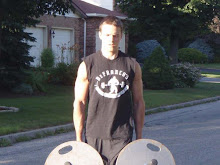
Stability balls and BOSU balls have become a pet peeve of mine lately. You'd be hard pressed to come into the gym at my university on any given day and avoid seeing some moron squatting with their feet up on a BOSU ball, or trying to stand on a stability ball while doing their bicep curls. I was about to write up a long winded post about how dangerous and pointless these activities were, but Charles Poliquin summed up my thoughts nicely in today's T-Nation article:
About 70% of Swiss ball exercises are worthless. It's just one of those things where people are taking an idea too far. There's some value to it, but it's not a cure-all.
Most personal trainers and strength coaches just don't know how to get people strong. I remember talking to this one trainer who uses all these stability gizmos. I asked him why he used all that shit and he said, "I'm not good, so I have to do these weird things so people will come to see me."
I call it "entertainment training," not strength training. And any time I see that horseshit, I want to kick the personal trainer in the head with a pair of steel-toe construction boots.
— Charles Poliquin
If you don't know who Charles Poliquin is, and question the validity of this statement, maybe it's you who needs a kick in the head with a pair of steel-toe construction boots.
I'll leave you with one final thought: Let's take two twins and put one of them on a strait-line mission to take his squat from 225 lbs up to 405 lbs. Let's give the other one a steady dose of squats with 45 lbs standing on a BOSU ball. At the end of the year, which twin do you think will be jumping higher? Running faster? Looking better naked? The answer should be obvious.
And when the hell does the ground move under your feet in the real world anyway?
I will make an exception to this rule, however, and say that if the instability is above the waist, then the movement is fine. This means unstable pushups and things of that nature are fine, and can actually be very productive movements. Eric Cressey goes into detail on this topic in his product The Truth About Unstable Surface Training.
Until next time, stay off the damn BOSU ball and train hard!
- T





